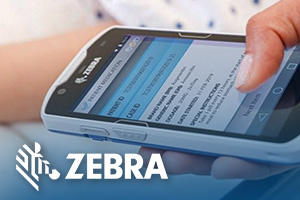3 benefits of creating drive-through medical testing centers
Organizational leaders in 2020 have come to realize that workplace modernization is no longer just something that’s “nice to have.” Nowadays, it’s...
2 min read
Owen Allen : Sep 11, 2020 5:00:00 AM

In every line of work, organizational leaders are learning that workplace modernization is a necessity. Why? Because the opportunity cost of not investing in it is just too great. If your people don’t have the latest and best technology, their everyday work processes will be slow and inefficient, and it’s only a matter of time before they become disengaged. Your staff will inevitably suffer as a result.
Perhaps nowhere is that more true than in healthcare. The process of delivering patient care has always been fraught with inefficiencies for everyone involved – patients have to endure long waits in waiting rooms, doctors have trouble getting test results and collaborating with specialists, and of course everyone has to worry about high costs. And with the rise of the COVID-19 pandemic in 2020, these issues have only become worse. Many medical facilities have found themselves overworked, understaffed, and stretched to their limits.
This naturally brings us to a question: What can we do to fix the system? How can we bring new levels of efficiency to healthcare, helping the industry to better tackle the challenges in front of it?
One great answer to this question is to adopt telemedicine. Allowing doctors to see their patients remotely eliminates a number of the current bottlenecks in the process, making medical appointments smoother and more painless for everyone involved. Doctors can get a better handle on their workloads (and keep themselves safer from infection), and patients will have an easier time getting medical attention without unnecessarily draining hours from their day.
Amid the ongoing pandemic this year, this approach has unsurprisingly been growing in popularity this year. A 2020 Forbes report showed that only 25% of people had used telemedicine before COVID-19 began, but now, 59% say they’re more likely to do so than they were previously. Additionally, 33% say they would leave their physician if they didn’t offer telemedicine access and a competitor did.
It’s becoming a cliché at this point to call remote work technologies “the new normal,” but in this case, they really are. A Forrester report this year predicted that the way caregivers have shifted to telemedicine this year will “forever change the way consumers seek and receive healthcare.” It’s not hard to see why, as the benefits are numerous. Patients are having an easier time enrolling to receive care, and doctors are alleviating much of the stress of juggling their busy schedules. Plus, healthcare costs are lower across the board.
At Zones, we are eager to work with care providers to help them unlock all of these benefits. We’ve always emphasized Workplace Modernization, but that’s particularly the case in healthcare in 2020, as we are heavily invested in the telemedicine revolution that’s happening today, and we’re excited to be a part of it. We work every day to give healthcare organizations the technology they need to offer more robust and customized telehealth options. Connect with us today, and we can begin to work our magic for you.
We’re bringing Workplace Modernization to every organization, everywhere. Check out our website and find out all about it.
Owen Allen is a Microsoft 365 specialist for Zones’ Office of the CTO.

Organizational leaders in 2020 have come to realize that workplace modernization is no longer just something that’s “nice to have.” Nowadays, it’s...

VMware Horizon 6 and AlwaysOn Point of Care Solution Healthcare IT leaders face many challenges as they seek to deliver secure, reliable mobile...

One of the primary drivers of workplace modernization is the need to get employees the information they need – quickly, reliably, every single time...